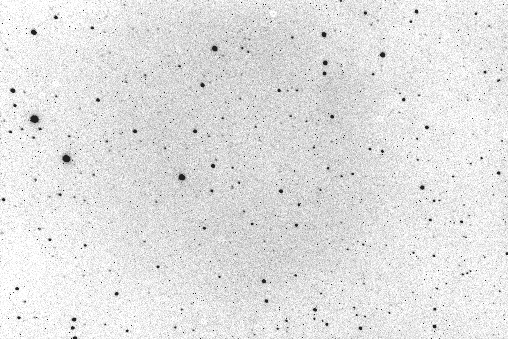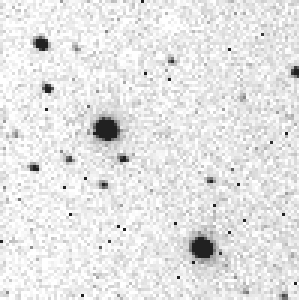
The night of Mar 27, 2002, EST, was strangely (for the time of year) clear. After one of the introductory Solar System Astronomy Lab classes looked at Saturn and its moons, from 8 to 10 PM, a few of us stuck around to try to acquire images of asteroid 1107 Lictoria. One of the Physics majors, Christopher Sinclair, had detected last month hints of variation in its light over a period of several hours. We wanted to follow up his work and try to confirm the variation -- which would indicate the rotation period of the asteroid.
Katie Masaryk, Brad Conrad, Doron Israel and one other student joined Michael Richmond in the 10-inch dome around 10:00 PM EST. We put the CCD camera with f/6.3 focal reducer on the telescope, set it cool to -10 degrees C, focused, and started to acquire images. Our first trials were 10 second, V-band exposures. The full moon made the sky very bright, so it was hard to find the asteroid in the field (as we learned later, we were looking in the wrong place in the image), so we switched to 15-second, unfiltered exposures to boost the signal.
Matt Aggleton joined us around 11:00 PM.
We acquired 5 sets of 20 images each, taken at roughly 30-second intervals.
image names EST start filter exptime -------------------------------------------------- 1107a 10:03:40 none 15 1107a.001, 1107a.002, etc. 1107b 10:25:50 none 15 1107c 10:45:40 none 15 1107d 11:09:00 none 15 1107e 11:29:30 none 15
Since we started late, we weren't able to get twilight sky flats. We also forget to take dark frames ...
One of the images is shown below.

We pointed the telescope in the wrong place (due to a mixup between UT and EST); fortunately, the asteroid still fell in the field, at the leftmost edge. Here's a closeup:

The asteroid is the faint object at 8:00 relative to the upper bright star.
Last modified 3/28/2002 by MWR.